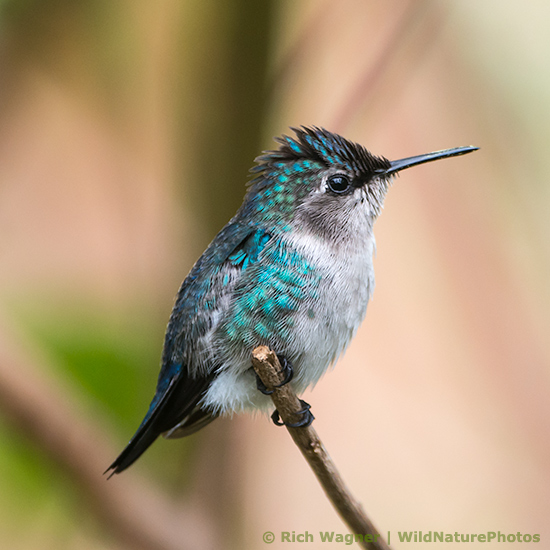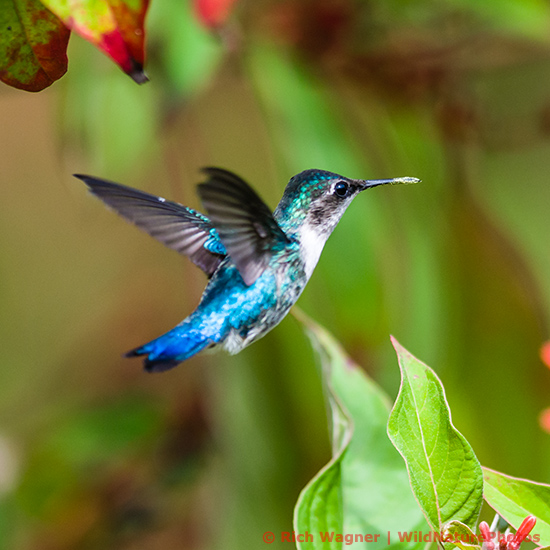Bee Hummingbird
Bee hummingbird ( Mellisuga helenae )
The bee hummingbird ( Mellisuga helenae ), also Kubaelfe, Bumblebee Hummingbird, Hummingbird Bee Hummingbird or elves called, is considered the smallest hummingbird and the smallest bird world. Often the dwarf Hummingbird ( Mellisuga minima) is called as the smallest kind.
Appearance and characteristics
Bees elves measure from tail to beak 5-7 cm, usually females are larger than males. With a weight of about 1.8 grams, they are lighter than an ostrich feather. You have a heartbeat of 300 to 500 beats per minute.
The characteristic species of hummingbirds Gefiederung includes both males and females of the bee elves differences. Thus the plumage of the male green and the female is colored blue-green, the color of the underside of the feathers, is light gray in both. The tail feather tips of the females are mottled white, while males are recognizable by the metallic red coloration of the head and throat.
Food
The bee hummingbird feeds exclusively on nectar. This she sucks on by a long, forked at the top and straw -like tongue, which is twice as long as the thin beak of the bee hummingbird. She hovers over 90 wing beats per second in the air in front of the plant. With the nectar and pollen are received, which are thereby transported from flower to flower. Thus, the bee hummingbird has an important role in the pollination of plants. The number of visited and pollinated flowers may be at 1,500 flowers per day.
Occurrence
The species is endemic. You need epiphytes and liana -rich forest areas and therefore occurs today only in some regions of the main island of Cuba, including the Zapata Swamp and on the Guanahacabibes Peninsula. Also on Isla de la Juventud, which was formerly called Isla de Pinos, the bee hummingbird is present.
Discovery
The bee hummingbird was discovered in 1844 by the German naturalist Johann Christoph Gundlach, but Juan Lembeye scientifically described for the first time (published in 1850).










